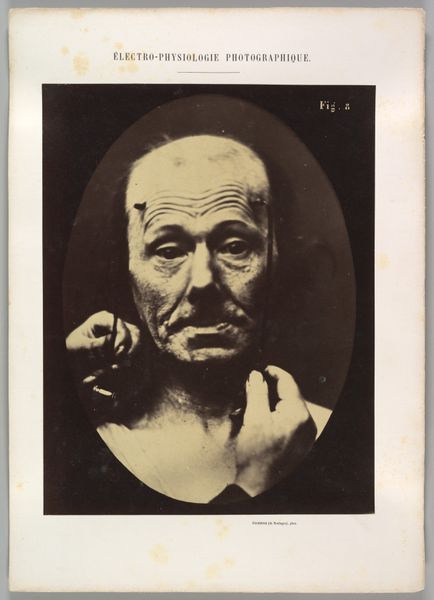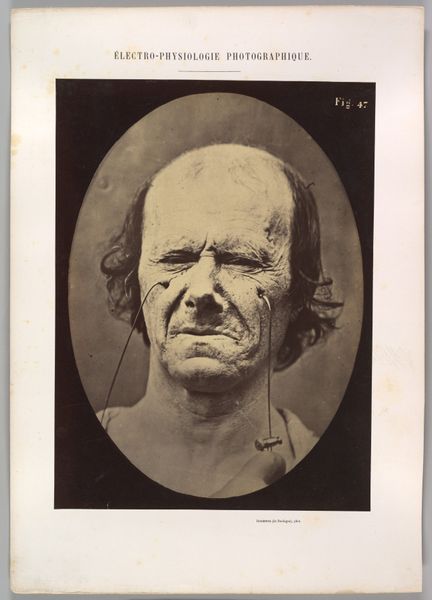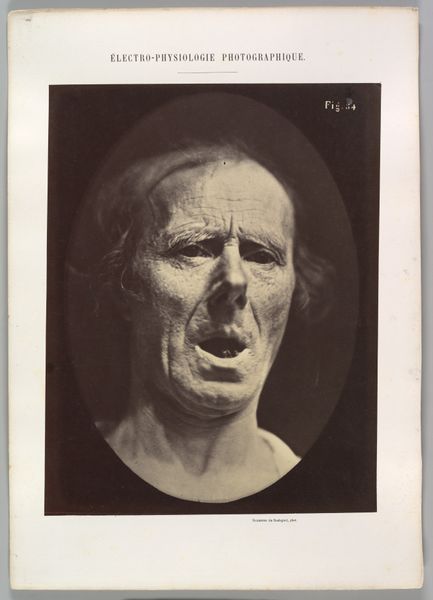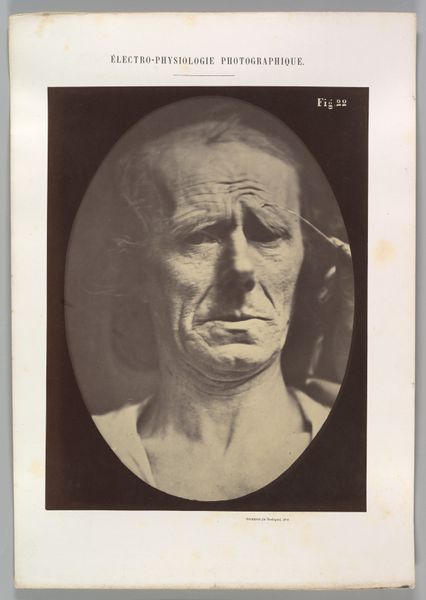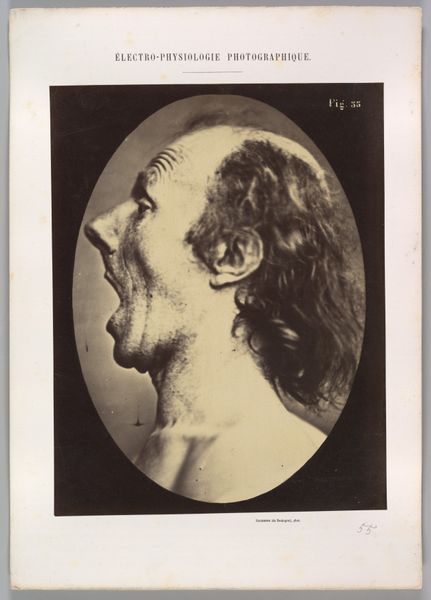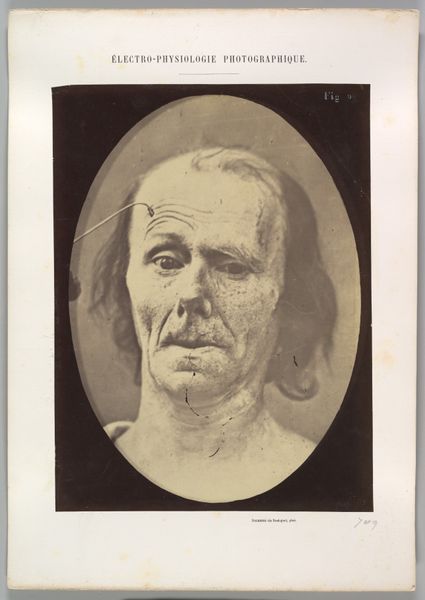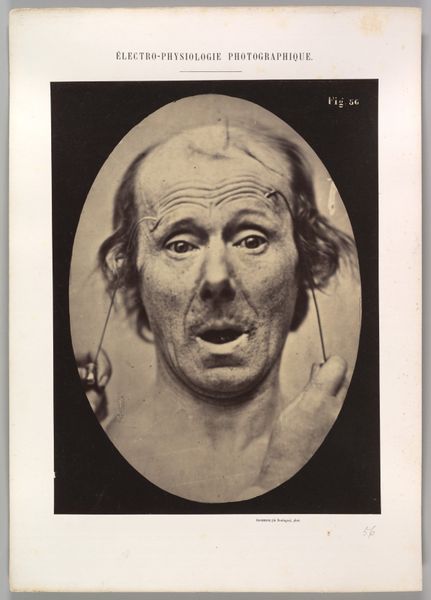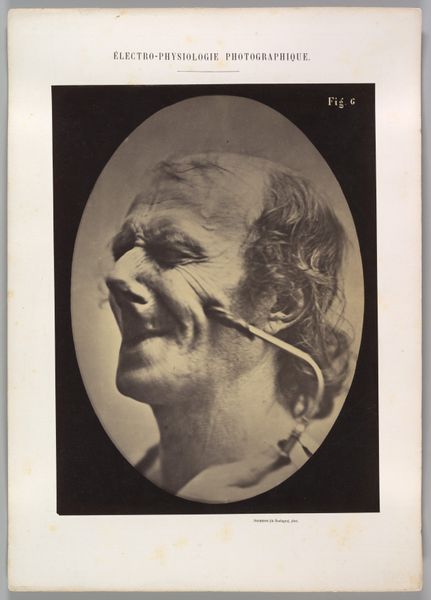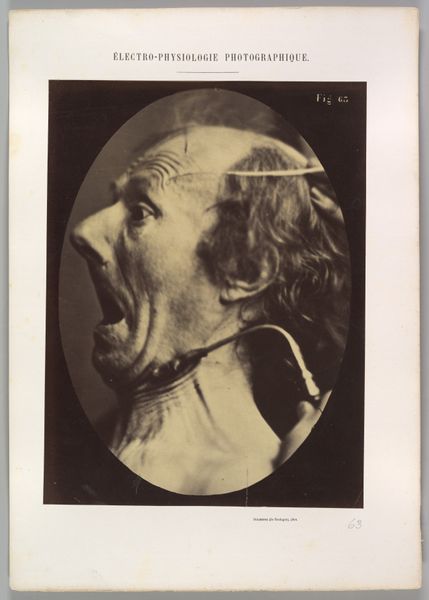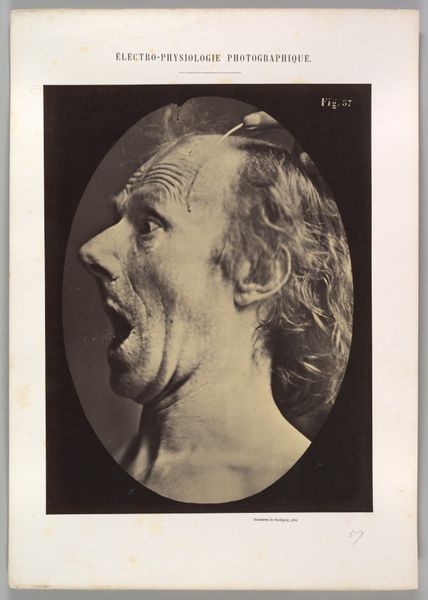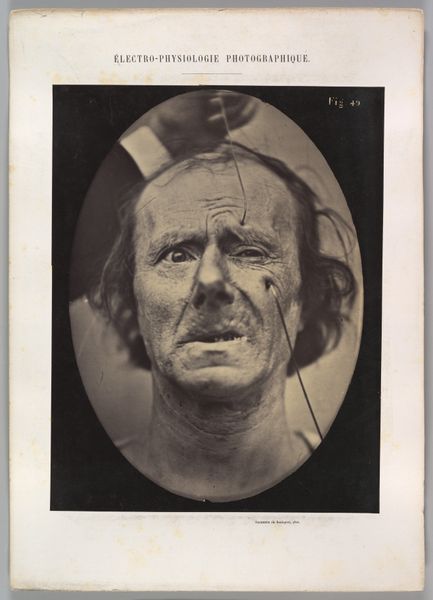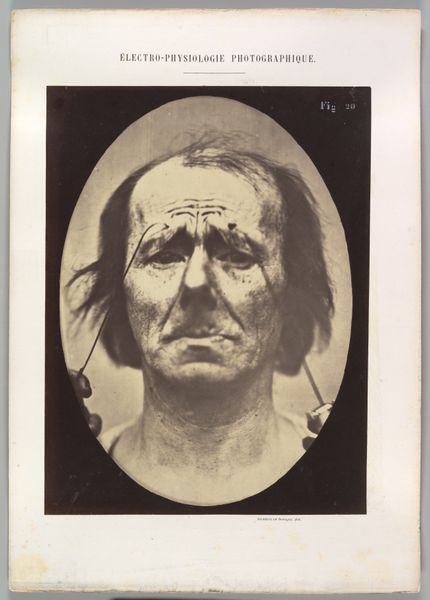
Figure 18: Aggression, wickedness 1854 - 1856
0:00
0:00
Dimensions: Image (Oval): 28.5 × 20.4 cm (11 1/4 × 8 1/16 in.) Sheet: 29.9 × 22.6 cm (11 3/4 × 8 7/8 in.) Mount: 40 × 28.3 cm (15 3/4 × 11 1/8 in.)
Copyright: Public Domain
Curator: Welcome to The Metropolitan Museum of Art. We are standing before a striking daguerreotype by Guillaume Benjamin Amand Duchenne, created between 1854 and 1856. It is entitled "Figure 18: Aggression, wickedness." Editor: My immediate reaction is...discomfort. There's something deeply unsettling about the manipulated expression. It's a forced, almost grotesque distortion of the face. The symmetry of the tools is a counterpoint that only heightens the disturbing emotion being depicted. Curator: Indeed. Duchenne was fascinated by the physiology of emotions and believed that specific facial muscles corresponded to particular emotional states. He used electrical stimulation to induce these expressions in his subjects. Notice the precise, almost clinical framing; the tight oval shape isolating the face and neck, rendering the apparatus all the more shocking. Editor: It's interesting that he calls it 'aggression, wickedness' as if these are concrete, visually definable entities. There's an almost scientific attempt to classify these states. But for me the symbol here is power and control. The tools he is using physically and metaphorically controlling his subject’s face and thus the emotion expressed. It really gets me thinking about the relationship between doctor and patient, the controlled and the controller. Curator: The formal elements underscore that tension. Look at the sharp contrast between light and shadow that delineates the planes of the face, further exaggerating the contortions. Semiotically speaking, one might argue that the face itself becomes a signifier of an artificially constructed emotion. Editor: The romantic framing is fascinating when paired with his methods. You can tell this image isn't intended to be cold or clinical. This is something of an alchemic formula of science and art with Romanticism playing its part, and with alchemy we move again into themes of symbolism of base emotion. Duchenne walks that border quite knowingly. Curator: I agree. What initially appears as detached scientific inquiry delves into the complexities of human emotion and its physical manifestation. Its rigid and constructed form and the soft emotive topic work hand in hand. Editor: Exactly. It’s fascinating how our analysis underscores both Duchenne’s scientific approach and its lingering cultural implications for our modern perceptions about our psychology today. Curator: A truly unforgettable work, melding the burgeoning field of science with deeply entrenched ideas about morality and emotion, one that speaks across time to contemporary audiences.
Comments
No comments
Be the first to comment and join the conversation on the ultimate creative platform.
